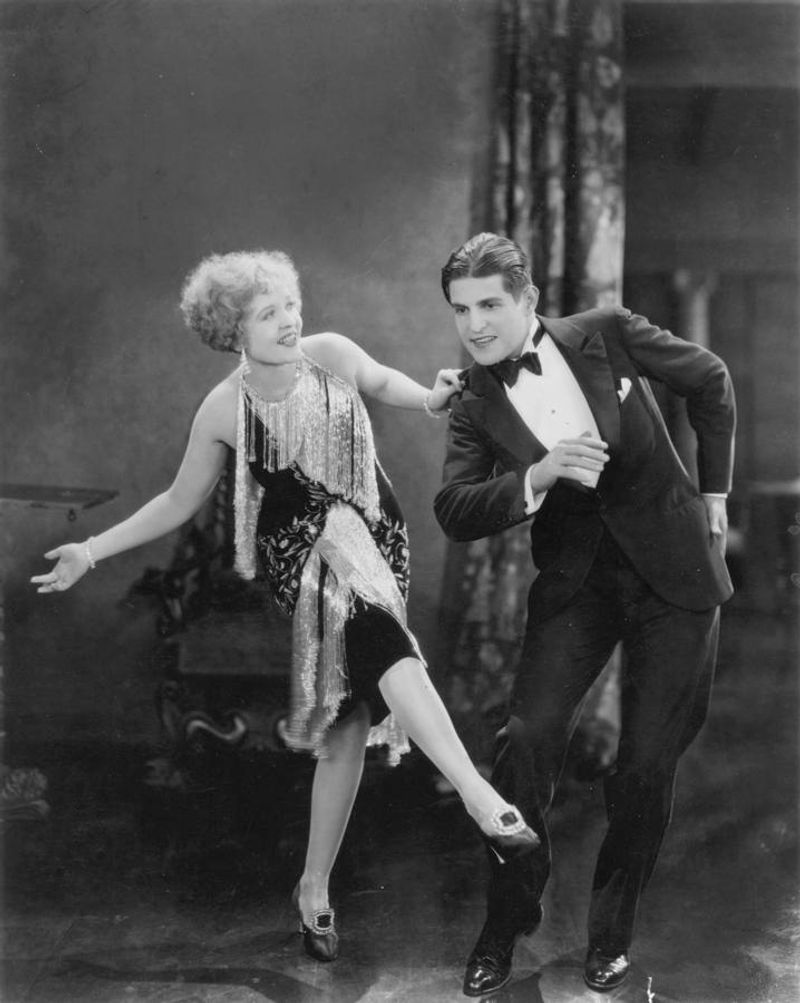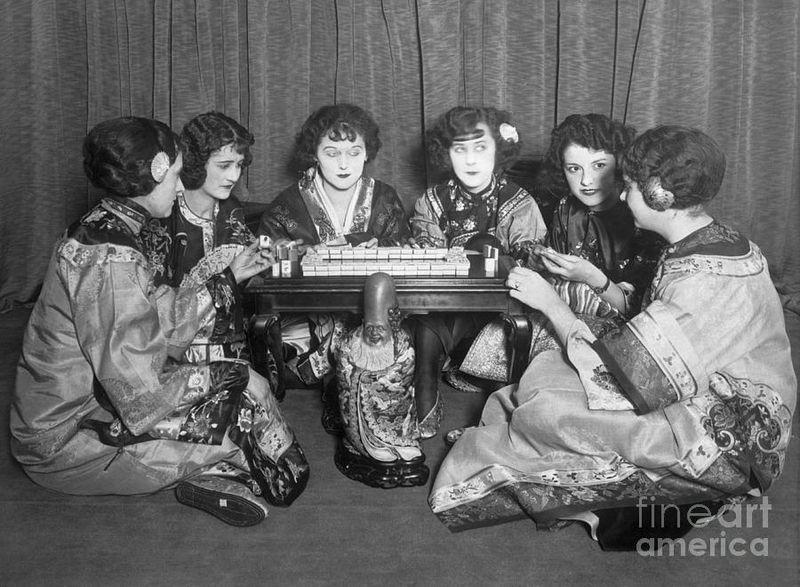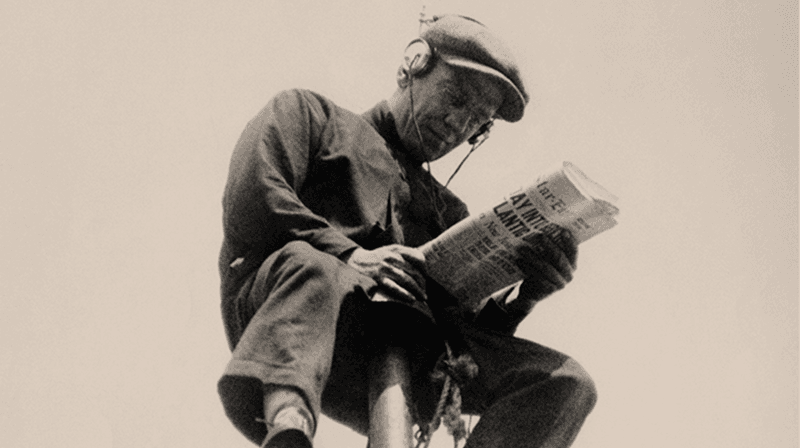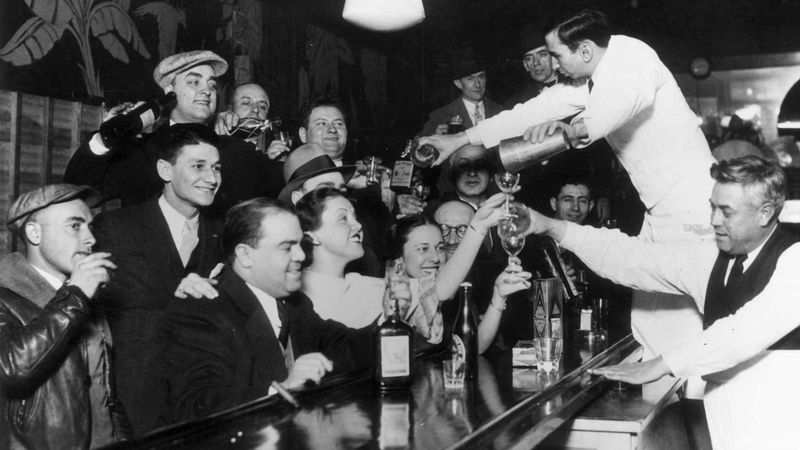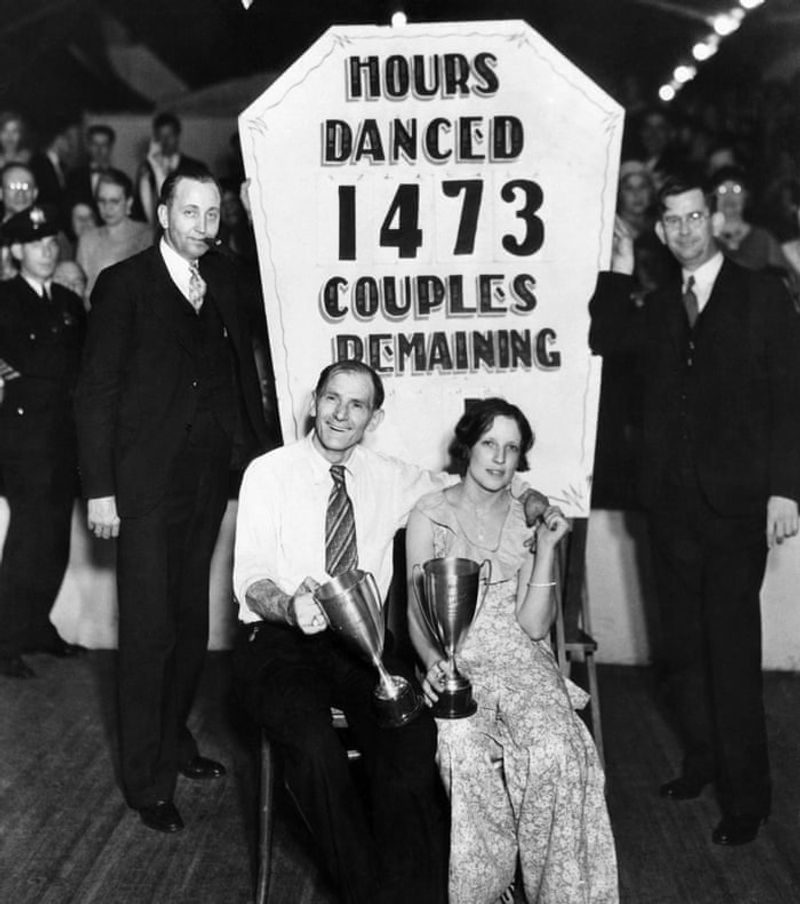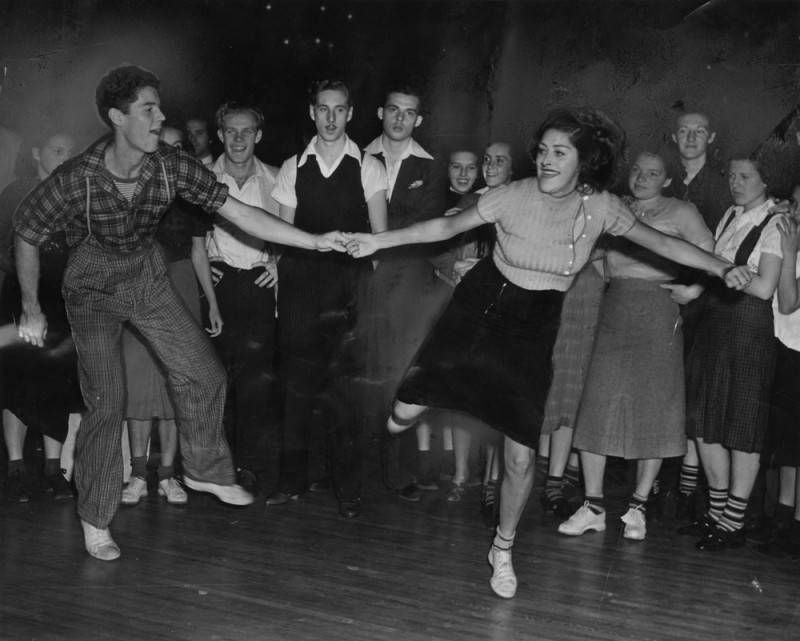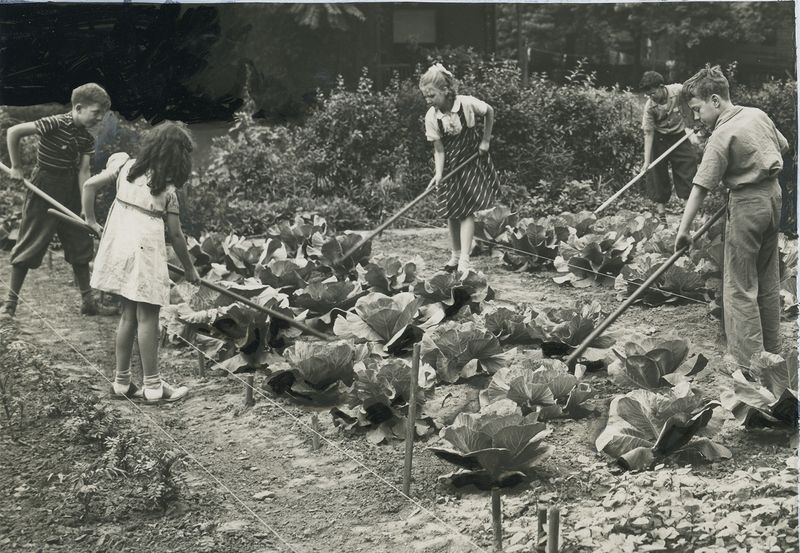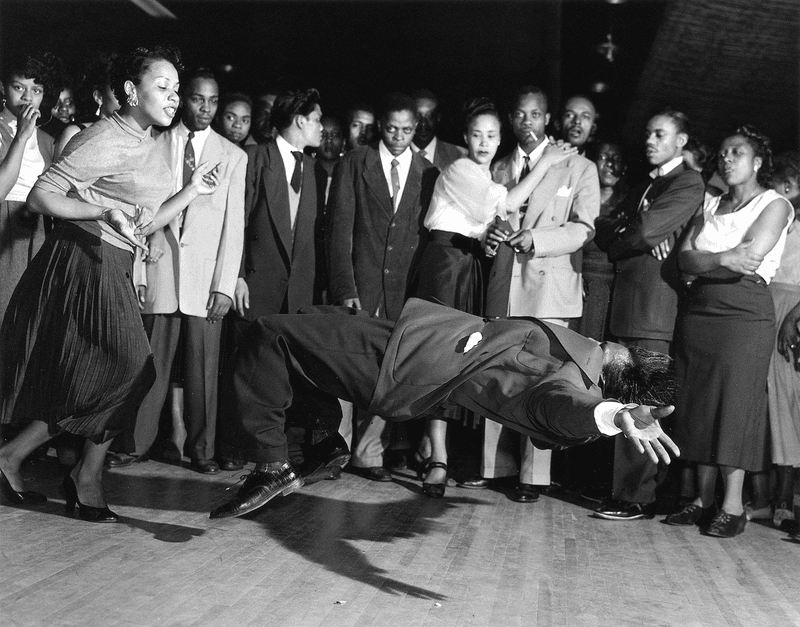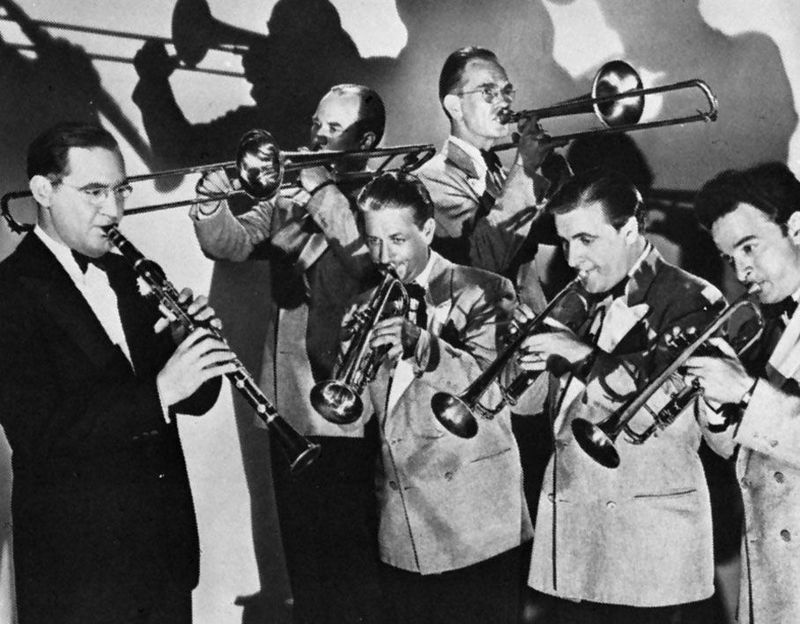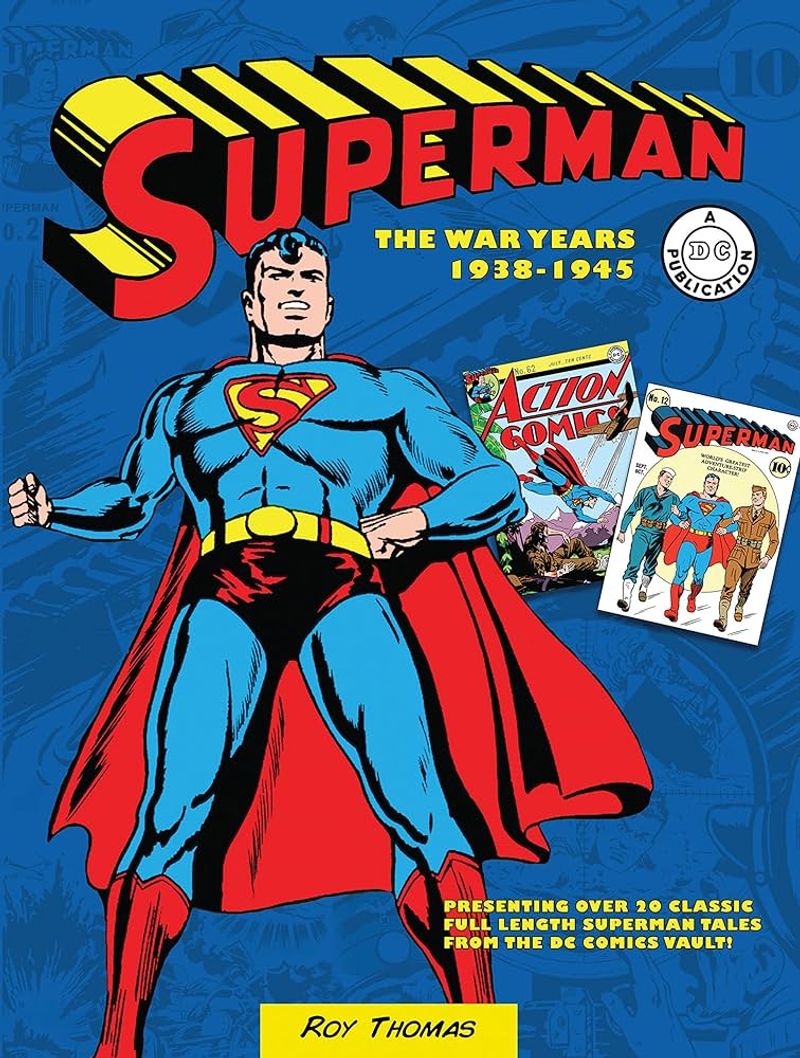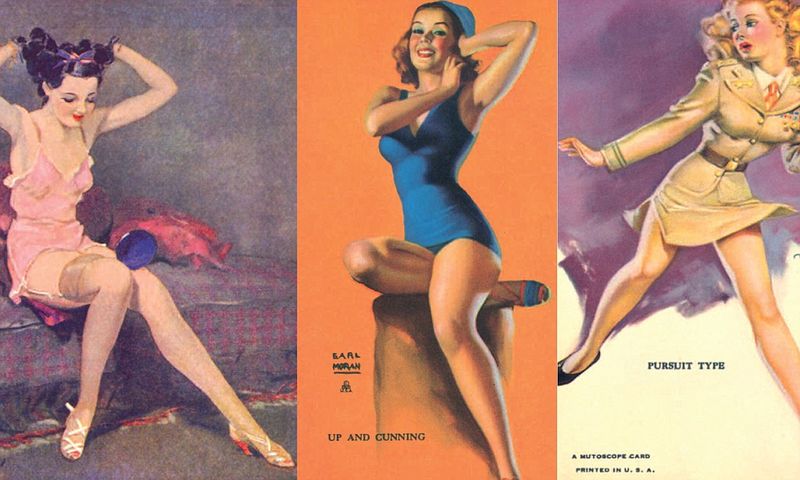Long before viral trends spread through TikTok or YouTube, American culture was swept up by dances, fashions, gadgets, and pastimes that captured the spirit of the times. Between the Roaring Twenties, the Great Depression, and World War II, generations of Americans found joy, escape, and identity through unforgettable fads that lit up parlors, sidewalks, and soda shops across the nation. Here are 17 fads from the 1920s–40s that defined the tastes, dreams, and distractions of three pivotal decades.
1. The Charleston (1920s)
With its energetic kicks and twists, the Charleston became the heartbeat of the Roaring Twenties, captivating young flappers and jazz lovers alike. This dance was more than just movement; it was a rebellious expression of the modern era. The dance floors of speakeasies were filled with people eager to showcase their moves, embodying the carefree spirit of the 1920s. Its infectious rhythm made the Charleston a must-have at every jazz party, turning it into a cultural phenomenon that still evokes nostalgia today.
2. Mahjong Mania (1920s)
Mahjong’s allure in the 1920s was undeniable, as it transformed from a Chinese pastime into an American social staple. Women, dressed in their finest flapper fashions, gathered around Mahjong tables, turning the game into a symbol of social status. It offered a break from the ordinary, fostering friendships and rivalries alike. The intricacies of the game, combined with the allure of its Eastern origins, made Mahjong a captivating craze that brought intrigue and elegance to the era’s social gatherings.
3. Flagpole Sitting (1920s)
In a quest for fame and thrill, flagpole sitting took the 1920s by storm. Young daredevils challenged each other to perch on poles, sometimes for days, captivating public attention. These spectacles became iconic symbols of the decade’s eccentricity. Crowds gathered to watch these brave souls, fascinated by their endurance and determination. As bizarre as it seemed, flagpole sitting was a testament to the era’s pursuit of novelty and excitement, embodying the spirit of daring and adventure that defined the Roaring Twenties.
4. Flapper Fashion (1920s)
Flapper fashion revolutionized women’s style in the 1920s, breaking away from traditional norms. Short hemlines, bobbed hair, and cloche hats became staples, reflecting a new feminist edge. This bold look symbolized independence and confidence, as young women embraced a more liberated lifestyle. With its beaded dresses and vibrant colors, flapper fashion captured the essence of the Jazz Age, influencing trends far beyond its time. It was more than clothing; it was a statement of empowerment and modernity, forever changing the fashion landscape.
5. Speakeasies & Bootleg Cocktails (1920s)
Amidst Prohibition, speakeasies emerged as clandestine havens for those seeking forbidden pleasures. Behind hidden doors, the 1920s nightlife thrived, offering a thrilling escape with bootleg cocktails and jazz. The allure of these secret bars lay in their exclusivity, complete with passwords and secret knocks. Patrons reveled in the thrill of defying the law, sipping on concoctions that ranged from creative to downright dangerous. Speakeasies became the embodiment of the era’s rebellious spirit, blending mystery, camaraderie, and indulgence into unforgettable nights.
6. Marathon Dancing (1920s–30s)
Dance marathons turned into a Depression-era sensation, offering both entertainment and a shot at much-needed cash prizes. Couples danced for hours, sometimes days, in grueling competitions that captivated audiences. These events were more than just contests; they were spectacles reflecting the era’s hardships and the human spirit’s resilience. Observers marveled at the dancers’ stamina, rooting for their favorites. Marathon dancing was a poignant metaphor for the decade’s struggles, yet it also provided a rare escape, blending endurance with entertainment.
7. Homemade Crystal Radios (1920s–30s)
The humble crystal radio set became a gateway to the world for young hobbyists in the 1920s and 30s. Crafting these simple yet ingenious devices offered a sense of achievement and access to the airwaves. Families gathered around these homemade radios, tuning in to hear jazz, boxing matches, and presidential speeches. The crackling broadcasts connected people to the broader world, offering a mix of education and entertainment. Crystal radios were more than gadgets; they were symbols of curiosity and innovation during a time of technological discovery.
8. Zoot Suits (1930s–40s)
With their exaggerated silhouettes, zoot suits became symbols of defiance and identity during the 1930s and 40s. These oversized ensembles, characterized by padded shoulders and pegged pants, were embraced by Black, Latino, and jazz communities as statements of cultural pride. Despite criticism, wearers flaunted their zoot suits boldly, turning them into icons of rebellion against mainstream norms. This distinctive fashion not only made a style statement but also played a crucial role in expressing social and political consciousness during challenging times.
9. Soap Operas on the Radio (1930s)
Before the advent of television, radio soap operas captivated American households. Shows like ‘Ma Perkins’ and ‘The Guiding Light’ became daily rituals for many, especially housewives. These audio dramas offered escapism, weaving intricate tales of love, betrayal, and suspense. Listeners planned their chores around broadcast times, eager for their daily dose of drama. Radio soaps were more than entertainment; they were a way of connecting people through shared stories, laying the groundwork for the future of serialized storytelling.
10. The Yo-Yo Craze (1930s)
The yo-yo, a simple yet captivating toy, sparked a nationwide craze in the 1930s. Children and teens eagerly mastered tricks, turning playgrounds into lively competition grounds. Its appeal lay in its portability and endless possibilities, capturing imaginations across the nation. Yo-yo contests attracted crowds, with participants showcasing their skills and vying for prizes. This craze provided joy amidst challenging times, blending fun with an element of friendly rivalry. The yo-yo’s enduring charm lies in its simplicity and the nostalgia it evokes.
11. The Jitterbug (Late 1930s–40s)
The jitterbug burst onto the scene in the late 1930s, filling dance floors with its vibrant, athletic moves. Swing dancers spun and flipped to the electrifying beats of big band music, invigorating wartime America. Its infectious energy made the jitterbug a favorite at USO dances, lifting spirits and fostering camaraderie. This lively dance not only boosted morale but also united people through its dynamic rhythm. The jitterbug’s legacy endures as a symbol of joy and resilience, reflecting the era’s cultural vibrancy.
12. Victory Gardens (1940s)
During WWII, victory gardens sprouted across American yards, symbolizing unity and self-sufficiency. Families transformed lawns into productive vegetable plots, contributing to the war effort by growing their own food. This communal endeavor fostered pride and solidarity, as neighbors shared tips and harvests. Victory gardens were more than practical; they were patriotic acts that strengthened communities and boosted morale. Amidst wartime challenges, these gardens provided fresh produce and a sense of purpose, embodying the resilience and resourcefulness of the home front.
13. The Lindy Hop (1930s)
The Lindy Hop, inspired by Charles Lindbergh’s famous flight, took flight itself in 1930s dance halls. This exuberant swing dance combined jazz rhythms with improvisation, captivating audiences with its dynamic flair. Harlem’s Savoy Ballroom became the epicenter of the Lindy Hop, where dancers showcased their creativity and skill. Its playful spirit and intricate moves made it a beloved pastime, offering an escape from everyday stresses. The Lindy Hop’s influence extends beyond its era, remaining a cherished symbol of dance innovation and cultural expression.
14. Swing Music Obsession (1930s–40s)
The swing music craze of the 1930s and 40s turned bandleaders into legends and dance halls into cultural hubs. Big names like Glenn Miller and Benny Goodman led the charge, drawing fans eager to jitterbug to their infectious tunes. Swing music’s upbeat tempo provided an antidote to the era’s woes, infusing joy and vitality into daily life. Teens formed fan clubs, immersing themselves in the vibrant sounds that defined a generation. The swing era remains a testament to music’s power to uplift and unite people.
15. Comic Book Fever (Late 1930s–40s)
The late 1930s saw the birth of a new cultural phenomenon: comic books. With the debut of Superman in 1938, a wave of colorful heroes captured young imaginations. Comics offered affordable escapism, transporting readers to worlds of adventure and justice. During the war, they provided comfort and inspiration, becoming beloved companions for many. Comic book fever spread rapidly, shaping youth culture and creating a new storytelling medium. The legacy of these early comics endures, influencing generations of readers and creators alike.
16. Pin-Up Girls (1940s)
In the 1940s, pin-up girls became iconic symbols of beauty and morale. Actresses like Betty Grable graced the walls of barracks and lockers, offering soldiers a glimpse of glamour and home. These images provided comfort and motivation, boosting spirits during difficult times. Pin-up culture extended beyond the military, influencing fashion and beauty standards back home. The allure of pin-up girls lay in their playful charm and timeless appeal, making them enduring icons of the era’s cultural landscape.
17. Swing Patrols and USO Dances (1940s)
During WWII, swing patrols and USO dances offered soldiers and civilians much-needed respite. Organized events with live bands created spaces for laughter, camaraderie, and romance. These dances featured energetic swing music, drawing participants into a world of rhythm and fun. For war-weary attendees, these events provided a sense of normalcy and connection. Swing patrols and USO dances became cherished traditions, embodying the spirit of unity and resilience that carried people through challenging times, leaving a lasting impact on American culture.

